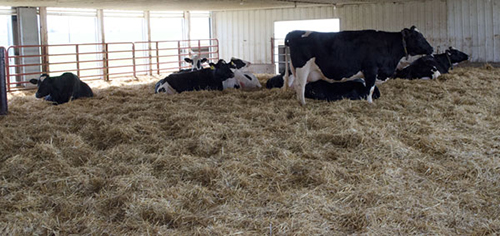
Drink your milk so you can have strong bones and healthy teeth was probably the first nutrition lesson I remember receiving. As I grew up, I learned more about calcium and the many other functions it serves in the body.
In the same way, the first lesson of fresh cow care is often to give the animal calcium if it can't get up after calving. However, the importance of calcium doesn't stop at cases of milk fever; more is riding on the cow's ability to regulate its calcium levels following calving. A recent Miner Institute Farm Report article reminded producers that the animal's productive and reproductive health are often also tied to this mineral. Research has shown that cows with subclinical hypocalcemia are more susceptible to metabolic and infectious diseases, produce less milk, and are harder to get bred than animals that don't have a deficiency.
Even more concerning, studies have shown as many as half of the cows that freshen suffer from subclinical hypocalcemia in the first 12 to 24 hours postcalving, with some studies showing those numbers as high as 70 percent of animals freshening.
Now, this story isn't necessarily a new one, and many farms have implemented measures to reduce incidents of hypocalcemia through negative dietary cation anion difference (DCAD) diets or reduced stocking densities in close-up groups.
The next important question to ask is does it work? Studies have shown positive responses from producer intervention whether by management style or feeding, but the Miner Institute article suggests testing blood calcium levels will provide a snapshot of the successfulness of intervention on individual farms. Specifically, it suggests sampling after the traditional 12- to 24-hour window following calving for a more accurate measure of the success of a DCAD strategy.
Finally, the article also reminds producers that eliminating subclinical hypocalcemia is virtually impossible, but setting the cows up for a successful recovery following low blood calcium levels postcalving is essential for a successful lactation.

The author is the Special Publications editor. She is responsible for development and marketing of books and plans, as well as coordinating internal communication pieces. Maggie was raised on a 150-cow dairy near Valley Center, Kan. and graduated from Kansas State University with degrees in agricultural communications and animal sciences.







